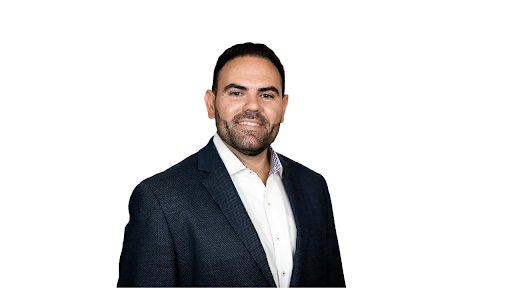Whether you are struggling with cash flow fluctuations, need extra funds to finance inventory purchases, or want to take advantage of bulk discounts, a commercial line of credit may be exactly what you need to navigate day-to-day operational expenses.
But what exactly is a business line of credit, and how can you get one?
To help you navigate the challenges of short-term funding and cash flow fluctuations, we have prepared a comprehensive guide on getting a commercial line of credit in a few easy steps. So, let’s get right into it:
What Is a Commercial Line of Credit?
Before you get a commercial line of credit, it is important to understand what exactly this financial tool is, and what are its main characteristics.
A commercial line of credit, also known as an operating or a business line of credit, is a flexible financial option offered by banks and lenders. It provides access to a predetermined amount of funds up to a maximum limit determined by the financial institution.
As opposed to business term loans, which are disbursed in a single lump sum upfront, lines of credit can be drawn as needed, and interest is only paid on the amount used (not the whole limit). Once you repay the funds, you can reuse them repeatedly.
1. Evaluate The Needs of Your Business
The first step you will need to take in order to get a commercial line of credit is to evaluate the needs of your business. Having a clear goal in mind is essential for choosing a lender, and determining how you will use the money in order to maximize the benefits of this tool.
At this stage of the process, it might be worth asking yourself some of these questions:
- What is my goal with this line of credit? – Why do you need a line of credit? Financing inventory purchases and managing cash flow are some common uses.
- How does my cash flow look throughout the year? – Determining the cash flow cycle of your business will help you identify when you might need extra funds.
- What specific expenses will the line of credit cover? – Get as specific as possible with the expenses that the commercial line of credit will cover for your business.
- How much funds do I need? – What is the maximum amount of funds that you need to borrow? Lenders can give line amounts anywhere from $100,000 to $10 million.
- How quickly can I repay the borrowed funds? – Make a careful and realistic assessment of your business’ ability to repay the line of credit.
- Is my business in good financial health? – Having a good idea of your business’ current financial situation will help you prepare for the application process.
- What collateral am I able to offer? – If you are opting for a secured commercial line of credit, you will be required to offer collateral as a guarantee against defaulting.
When it comes to getting a commercial line of credit, it’s also important to assess how this option fits into your overall financial strategy. Ideally, it should align with your long-term financial goals and complement other forms of financing you may have.
2. Review Your Personal And Business Credit Score
The next step you will need to take if you want to get a commercial line of credit is to review your personal and business credit score. Both are extremely important for the application process, as they determine your creditworthiness in front of the lender.
While the lender will eventually be the one assessing your credit history, having a good idea on where you currently stand will put you in a better position for the process.
- Personal credit score – You can request a personal credit score report from the 3 major credit bureaus: Equifax, Experian, and TransUnion. When applying for the line of credit, be prepared to show a credit score of at least 670 on the FICO scale.
- Business credit score – You can also request a report for your business credit score from credit bureaus such as Dun & Bradstreet, Experian Business, and Equifax Business. A good credit score for most lenders will be 75 or higher.
Once you know your personal and business credit score, you will be able to make a better assessment regarding your financing options, and how likely you are to get approved for a commercial line of credit.
If your credit scores are not good, it will be a good time to start improving them – higher scores will not only improve your chances of approval, but may also get you better terms and interest rates.
3. Prepare The Necessary Documentation
Now that you have evaluated the needs of your business, and reviewed your credit score profile, the next step you need to take in order to get a commercial line of credit is to prepare the necessary documentation for the application. This typically includes:
- A detailed business plan that shows how you intend to use the line of credit
- Recent business bank statements, usually from the last 3 or 6 months
- Business tax returns for the last 2 to 3 years to help you verify your income
- Financial statements, including balance sheets, income statements and others
- Legal documents, from your business license to commercial leases
- A detailed list of current debts, including business loans, mortgages, etc.
- Valid identification documents to comply with know-your-customer (KYC) regulations
If you have a small business or a startup, you may also have to disclose personal financial details of each business owner and major partner. This can include, but is not limited to personal tax returns, personal bank statements, and personal financial statements.
4. Understand The Commercial Line of Credit Requirements
If you are looking to get a commercial line of credit, we recommend you to do your due diligence and get a good understanding of the requirements that lenders have for this financing option.
While this may vary by lender, we are most commonly looking at:
- Business score of 75 or higher
- Good personal score of 670 or higher
- Debt service coverage ratio (DSCR) of 25 or higher
- Business history of at least 2 years
- Proof of business ownership
- Minimum annual revenue of $120,000 ($250,000 to apply with NBC)
As we mentioned earlier, you will also have to provide financial statements, recent bank statements, personal and business tax returns for the last 2 or 3 years, a detailed business plan, as well as legal documents and a list of current debts and obligations.
5. Evaluate Lenders
When it comes to getting a commercial line of credit, it is extremely important to evaluate lenders so you can find the best financing option for your business. However, doing a manual assessment can be a daunting and time-consuming task.
For this reason, we recommend applying for a line of credit through National Business Capital. As the leading marketplace for business loans, NBC gives you access to exclusive offers from lenders that you can’t find anywhere else, making it easy for you to find the options that fit your needs the best.
Get offers from +75 lending partners simultaneously, and compare easily without spending hours on daunting, manual research.
6. Apply For a Commercial Line of Credit
Now that you’ve done your due diligence, it is time to apply for a commercial line of credit! Prepare all the documentation that you will need, and begin the application process with your lender of choice.
Click here to apply with NBC for a fast, smooth, and streamlined process from start to finish. You can get funding in as little as 24 hours! If you need help with choosing the right option for your business, you can also speak with one of our Business Finance Advisors.
7. Finalize The Agreement
Once you’ve selected the best commercial line of credit option for your goals, it is time to finalize the agreement. Make sure to review the final contract, paying close attention to the fine print of any clauses related to default, collateral, or changes in terms.
Once you are fully informed and comfortable with the terms, sign the agreement to formalize the line of credit.
Getting a Commercial Line of Credit With National Business Capital
If you want to get a commercial line of credit, look no further than National Business Capital. With a single application, you can get access to dozens of exclusive offers from +75 lenders so you can make the best decision for your business.
With $2+ billion financed since 2007, multiple awards, and an experienced team of Business Finance Advisors, we have everything you need to find the best financing options for your project.
Are you ready to get started? Apply here.
Frequently Asked Questions
How does a commercial line of credit work?
A commercial line of credit is a flexible financing tool for businesses, allowing them to borrow up to a preset limit as needed. Interest is charged only on the amount used, and funds can be drawn repeatedly once repaid, making it ideal for managing cash flow and unexpected expenses.
What fees are associated with a commercial line of credit?
A commercial line of credit may include various fees: an application fee for processing your request, an annual fee for access to the credit, transaction fees for each withdrawal, and sometimes a non-utilization fee if the credit is not actively used.
Interest rates on the borrowed amount are also a key cost but vary based on the credit terms and the borrower’s financial profile.
How much can I borrow from a line of credit?
The borrowing limit on a line of credit depends on the borrower’s creditworthiness, financial stability, and lender’s policy. It can range from a few thousand to millions of dollars, reflecting the business’s revenue, credit score, and collateral offered.
How long does it take to get approved for a business line of credit?
The approval time for a business line of credit can vary widely, from a few days to several weeks, depending on the lender and the complexity of the application.
Online lenders might offer quicker decisions, sometimes within a day, while traditional banks may take longer, especially if extensive documentation and review are required.
Do I need to provide collateral for a line of credit?
Whether you need to provide collateral for a line of credit depends on the type of credit (secured vs. unsecured) and lender requirements. Secured lines require collateral, such as real estate or inventory, which reduces the lender’s risk.
Unsecured lines don’t require collateral but may have higher interest rates and stricter credit requirements due to the increased risk to the lender.
Disclaimer: The information and insights in this article are provided for informational purposes only, and do not constitute financial, legal, tax, business or personal advice from National Business Capital and the author. Do not rely on this information as advice and please consult with your financial advisor, accountant and/or attorney before making any decisions. If you rely solely on this information it is at your own risk. The information is true and accurate to the best of our knowledge, but there may be errors, omissions, or mistakes.

Phil Fernandes
Phil Fernandes serves as Chief Operating Officer for National Business Capital. He boasts 15 years of experience in sales and 10+ years of management experience as National’s VP of Financing/Analytics. Phil is also an excellent writer who's completed the Applied Business Analytics executive program at MIT and regularly contributes articles to National Business Capital’s blog.
Accelerate Your Success
Seize the opportunity to grow your business and gain access to the capital you need.






